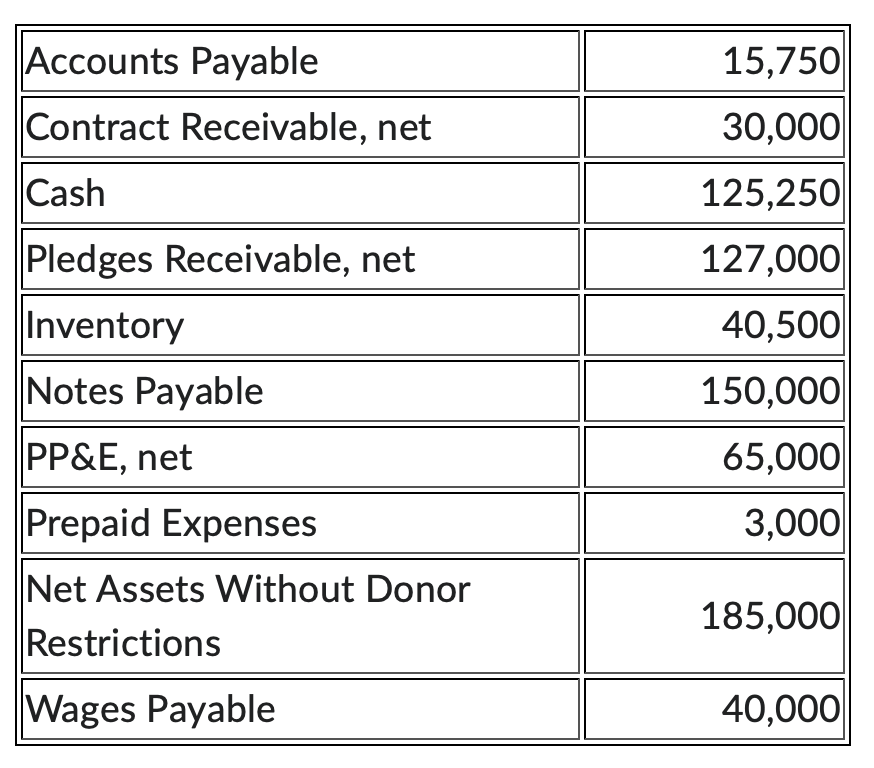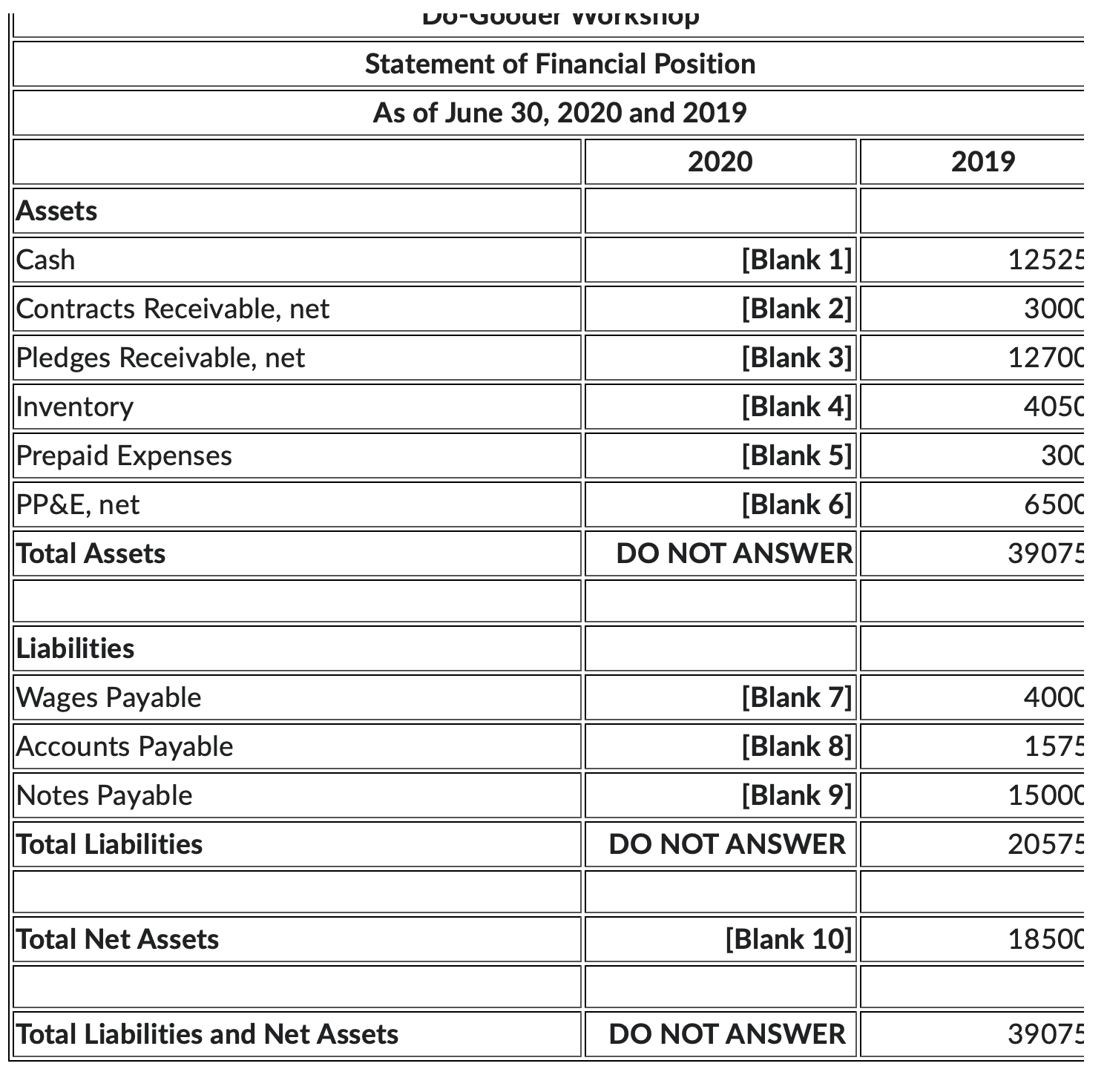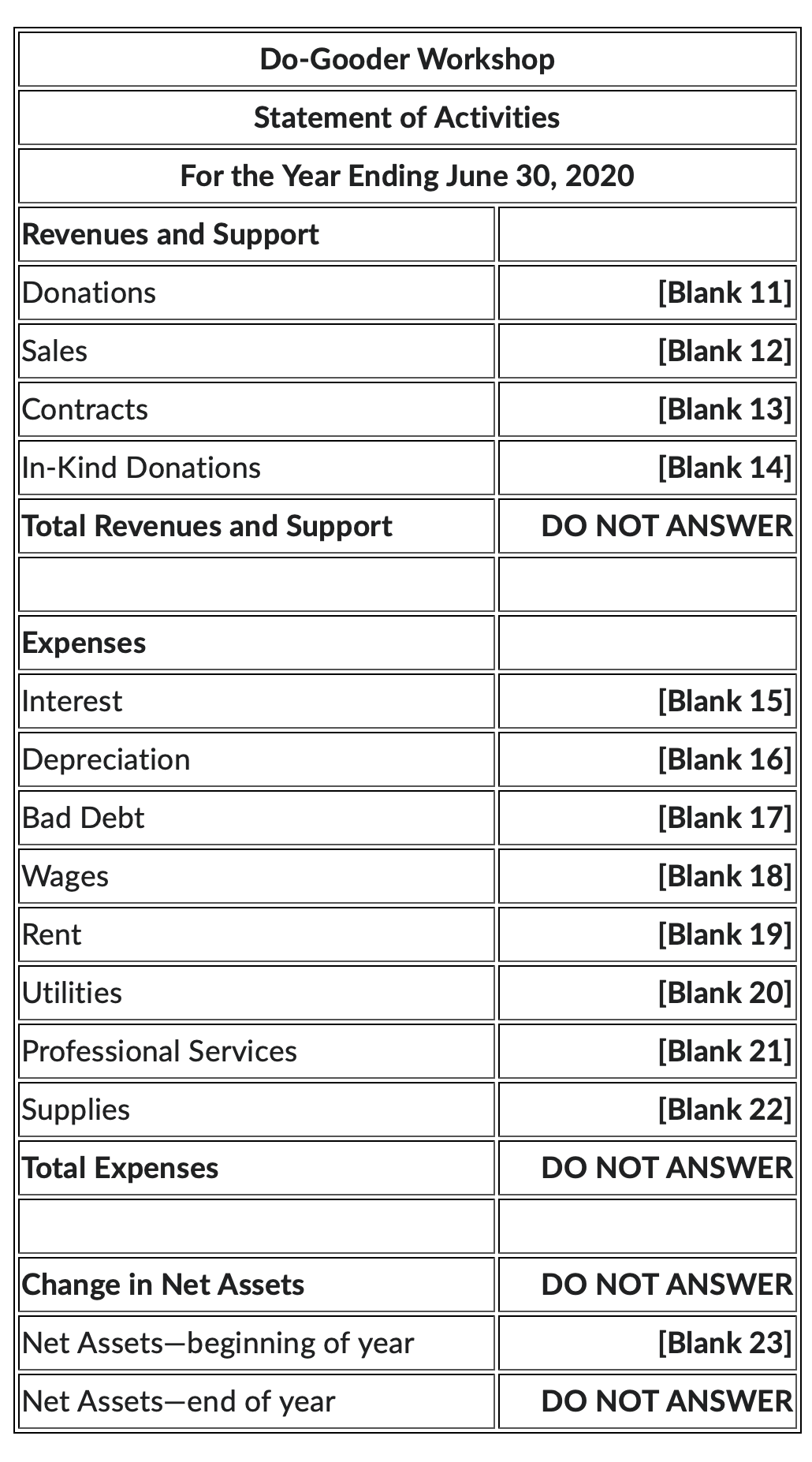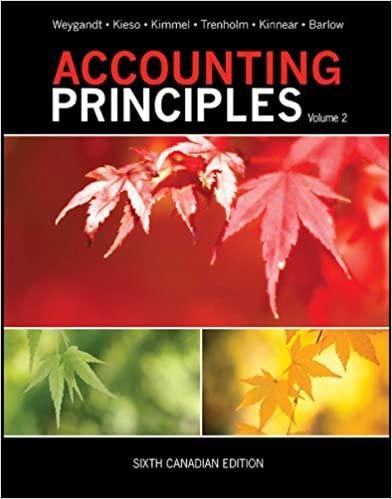Question
Do-Gooder Workshop (DGW) is a not-for-profit organization that provides manufactures and provides home furnishings in economically depressed areas. In addition, the workshop has a contract
Do-Gooder Workshop (DGW) is a not-for-profit organization that provides manufactures and provides home furnishings in economically depressed areas. In addition, the workshop has a contract to furnish state government agencies located nears its headquarters. DGW prepares its financial statements on the accrual basis of accounting and follows the GAAP for non-for-profit organizations. It ended FY 2019 with the following account balances (in no particular order):
The following financial events occurred during FY 2020, which ended June 30, 2020:
- On the first day of FY 2020, DGW took out a $100,000 loan with an annual interest rate of 3.5%. Interest must be paid in full on the last day of the fiscal year. In addition, interest on outstanding principal from a loan taken out in a prior fiscal year, which has an annual interest rate of 5%, is also due on June 30.
- DGW immediately used the proceeds from the new loan to purchase equipment to speed up the production of home furnishings. The equipment has no salvage value and an estimated useful life of 10 years. Capital assets purchased in prior fiscal years depreciated by $12,000 in FY 2020. DGW calculates depreciation using the straight-line method.
- DGW earned $300,000 in pledges throughout the year and collected $350,000 of its outstanding pledges. At the end of the fiscal year, DGW has a policy of writing off 5% of its outstanding pledges as uncollectible. [Use "Donations" as the line item in the financial statements, as appropriate.]
- Sales revenue totaled $450,000 in FY 2020 and was received in cash. [Use "Sales" as the line item in the financial statements, as appropriate.]
- DGW earned $160,000 in state contract revenue in FY 2020, up from the $120,000 the organization earned in FY 2019. The contract revenue is paid with a one-quarter lag. [Use "Contract Revenue" as the line item in the financial statements, as appropriate.]
- DGW's employees earned $235,000 in total, spread evenly throughout the year. Employees are paid timely.
- DGW rents office space with payment made one month in advance. In FY 2020, DGW's rent was $3,000 per month, and rent will increase to $3,250 per month in FY 2021. DGW also used $350 per month during the year in utilities, which were paid timely. [Record rent and utilities separately in the financial statements, as appropriate.]
- A licensed, professional contracting company installed DGW's new equipment during the fiscal year free of charge. The service is valued at $5,500 and DGW would have otherwise had to pay for comparable professional services.
- In FY 2020, DGW ordered $4,500 worth of supplies each month. Supplies are paid timely and the organization ended FY 2020 with an ending inventory balance of $9,000. In addition, DGW fully paid off prior fiscal years' obligations to its vendors.
Record these events in a transactions worksheet and use that sheet to create the Balance Sheet, Activity Statement, and the Cash Flow Statement for DGW for FY 2020.


Fill in the blanks and answer the following questions:
Enter the following numbers from your Cash Flow Statement:
A) Net Cash from Operating Activities: $
B) Net Cash from Investing Activities: $
C) Net Cash from Financing Activities: $
D) Net Change in Cash: $
\begin{tabular}{||l|r|} \hline Accounts Payable & 15,750 \\ \hline \hline Contract Receivable, net & 30,000 \\ \hline \hline Cash & 125,250 \\ \hline \hline Pledges Receivable, net & 127,000 \\ \hline Inventory & 40,500 \\ \hline Notes Payable & 150,000 \\ \hline \hline PP\&E, net & 65,000 \\ \hline \hline Prepaid Expenses & 3,000 \\ \hline \hline Net Assets Without Donor & 185,000 \\ \hline Restrictions & 40,000 \\ \hline \hline Wages Payable & \\ \hline \end{tabular} \begin{tabular}{|c|c|c|} \hline \multicolumn{3}{|c|}{ LU-GUUueI vvuiksIIUp } \\ \hline \multicolumn{3}{|c|}{ Statement of Financial Position } \\ \hline \multicolumn{3}{|c|}{ As of June 30, 2020 and 2019} \\ \hline & 2020 & 2019 \\ \hline \multicolumn{3}{|l|}{ Assets } \\ \hline Cash & [Blank 1] & 12525 \\ \hline Contracts Receivable, net & [Blank 2] & 300C \\ \hline Pledges Receivable, net & [Blank 3] & 1270C \\ \hline Inventory & [Blank 4] & 405C \\ \hline Prepaid Expenses & [Blank 5] & 30C \\ \hline PP\&E, net & [Blank 6] & 650C \\ \hline Total Assets & DO NOT ANSWER & 39075 \\ \hline \multicolumn{3}{|l|}{ Liabilities } \\ \hline Wages Payable & [Blank 7] & 400C \\ \hline Accounts Payable & [Blank 8] & 1575 \\ \hline Notes Payable & [Blank 9] & 1500C \\ \hline Total Liabilities & DO NOT ANSWER & 20575 \\ \hline Total Net Assets & [Blank 10] & 1850C \\ \hline Total Liabilities and Net Assets & DO NOT ANSWER & 39075 \\ \hline \end{tabular} \begin{tabular}{|c|c|} \hline \multicolumn{2}{|c|}{ Do-Gooder Workshop } \\ \hline \multicolumn{2}{|c|}{ Statement of Activities } \\ \hline \multicolumn{2}{|c|}{ For the Year Ending June 30, 2020} \\ \hline \multicolumn{2}{|l|}{ Revenues and Support } \\ \hline Donations & [Blank 11] \\ \hline Sales & [Blank 12] \\ \hline Contracts & [Blank 13] \\ \hline |In-Kind Donations & [Blank 14] \\ \hline Total Revenues and Support & DO NOT ANSWER \\ \hline \multicolumn{2}{|l|}{ Expenses } \\ \hline Interest & [Blank 15] \\ \hline ||Depreciation & [Blank 16] \\ \hline Bad Debt & [Blank 17] \\ \hline Wages & [Blank 18] \\ \hline Rent & [Blank 19] \\ \hline Utilities & [Blank 20] \\ \hline Professional Services & [Blank 21] \\ \hline Supplies & [Blank 22] \\ \hline |Total Expenses & DO NOT ANSWER \\ \hline Change in Net Assets & DO NOT ANSWER \\ \hline Net Assets-beginning of year & [Blank 23] \\ \hline Net Assets-end of year & DO NOT ANSWER \\ \hline \end{tabular}Step by Step Solution
There are 3 Steps involved in it
Step: 1

Get Instant Access to Expert-Tailored Solutions
See step-by-step solutions with expert insights and AI powered tools for academic success
Step: 2

Step: 3

Ace Your Homework with AI
Get the answers you need in no time with our AI-driven, step-by-step assistance
Get Started


